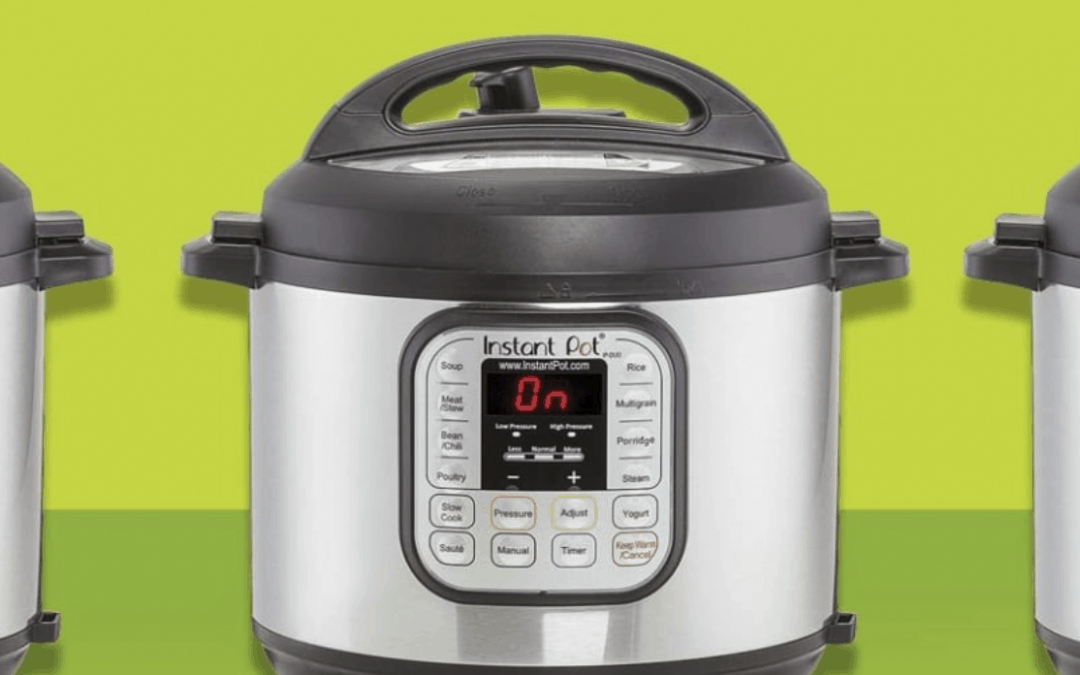It’s that time of year again. We’ve all seen the fall recipes that are so easy to just throw in the slow-cooker in the morning and come home to a home cooked meal. Recipes taste great and they are supposed to be more energy efficient that leaving a roast to slow-cook in the oven all day, right? However, if you really want to watch your energy use, think Instant Pot instead of a Crock-Pot.
An Instant Pot or Insta-Pot (as it’s sometimes referred to) is a combined pressure cooker and slow cooker. It is marketed as a 7-in-1 kitchen appliance designed to consolidate the cooking and preparing of food to one device. But it ‘s much more than that when it comes to energy efficiency, here’s why:
- It’s one of the greenest kitchen appliances, saving up to 70% electricity when comparing it to other appliances including the oven, a boiling pot + stove, steamer, etc.
- The exterior is fully insulated, keeping the hot temperatures inside the pot instead of heating up your kitchen. Two layers of air pockets between the cooking inner pot and the exterior means that it is cool to the touch in brief cooking and only warm during long cooking periods. Energy goes into the food instead of the room and is more efficient than conventional pressure cookers.
- Instant-Pot’s monitoring system heats the inner pot to maintain a certain pressure level. In long duration cooking, heating is off nearly 40% of the cooking time.
- Because Instant-Pot is fully sealed during cooking, less water is required for cooking (about 75% less water used than steaming). This reduces energy use while cooking and does not heat up the kitchen with steam.
- The Insta-Pot DUO60 is 1000 watts and uses a thermostat to bring the water up to boiling to bring up the pressure. Theoretically, if the Insta-pot stays in the boiling stage for as long as 1 hr, that would use 1 kilowatt hour (kWh). If each kWh costs 12 cents then the cost of the Insta-pot for that hour would be 12 cents. The less amount of time that the thermostat makes the unit stay on full heat continuously, the lower the cost would be. The High Saute mode might have the thermostat on full almost as continuously as the boiling stage, but the pressure modes uses less time (off-on-off-on), and the Keep Warm mode would be on the least amount of time (so the cheapest of all).
- A typical slow-cooker uses 108 watts of power on the low setting. Let’s say that it is on for 8-9 hours that would mean it will generally use around 1.5kWh.
- An electric oven usually costs about $0.30 to $0.60 to run for an hour. Instead of eliminating baking, simply take one day a week to bake, roast and use your oven. By scheduling a baking day and preparing all your baked and oven-cooked foods that single day you can maximize the space in your oven by baking different items together at the same temperature, and also take advantage of the residual heat in the oven, thus reducing energy loss caused by preheating.
If you are monitoring energy use and want to reduce use between the hours of 2:00-7:00, consider using an Instant Pot to prepare food instead of the oven or having a crock-pot on all day. You could minimize peaks that cause excessive demand rate charges, and minimize cooling costs in the summer.

